- عنوان کتاب: I am Jugoslovenka! – Feminist performance politics during and after Yugoslav socialism
- نویسنده: Jasmina Tumbas
- حوزه: فمینیسم
- سال انتشار: 2022
- تعداد صفحه: 346
- زبان اصلی: انگلیسی
- نوع فایل: pdf
- حجم فایل: 20.9 مگابایت
جمهوری سوسیالیستی فدرال یوگسلاوی (1945-1992) یکی از جالبترین و متناقضترین نمونههای قدرت رهاییبخش زنان در طول سوسیالیسم قرن بیستم را نشان میدهد. در طول جنگ سرد، یوگسلاوی که بیشترین گرایش به غرب را در بین تمام کشورهای سوسیالیستی داشت، به مکانی تبدیل شد که در آن گرایش های جدید در هنر و فیلم آوانگارد شکوفا شد، در حالی که اصول مارکسیستی بر آن حاکم بود، ایدئولوژی ضدفاشیستی همراه با سکس و راک اند رول حاکم بود. زنان از حقوق قانونی و تحرک اجتماعی، از جمله دسترسی به آموزش و تحرک نیروی کار، بیش از سایر کشورهای اروپای شرقی و برخی کشورهای غربی برخوردار بودند. در اوت 1945، زنان به طور قانونی برابر مردان اعلام شدند. در اوایل سال 1951، جنسیت لزبین جرم زدایی شد (و در سال 1977 همجنسگرایی). سقط جنین در سال 1952 قانونی شد و مرخصی زایمان با حقوق و حق طلاق تا دهه 1950 از نظر اجتماعی و قانونی پذیرفته شد. در واقع، در اوایل سال 1928، حدود هفده سال قبل از تأسیس یوگسلاوی، اعلامیه ای که توسط رهبر کمونیست و پارتیزان جوسیپ بروز تیتو – که در سال 1945 رئیس جمهور یوگسلاوی می شد – توزیع کرد، اعلام کرد که زنان برای زندگی ضروری هستند. مبارزه با «جنگ امپریالیستی» بورژوازی و دعوت از آنها برای پیوستن به حزب کمونیست در تعداد زیادی برای «جنگ تا آخر برای رهایی طبقه کارگر». در سال 1936، مجله Žena Danas (زن امروز) تأسیس شد و اولین شماره آن با عنوان “Novi feminizam” (فمینیسم جدید) تأکید کرد که “مبارزه برای حقوق زنان، مبارزه با فاشیسم است.” جبهه ضد فاشیست زنان یوگسلاوی (AFW) در بحبوحه جنگ جهانی دوم (1942) تأسیس شد و تا پایان جنگ بیش از دو میلیون عضو داشت.
تا سال 1953، تمام این پیشرفتهای خارقالعاده برای زنان، نخبگان کمونیست یوگسلاوی تحت سلطه مردان را بر آن داشت تا اعلام کنند که به هدف خود یعنی آزادی زنان رسیدهاند و بنابراین فمینیسم منسوخ شده است – نه فقط منسوخ شده، بلکه به عنوان یک جنبش سیاسی. با هدف بزرگتر آزادی مردم مخالف بود و از این رو منافع شخصی و تفرقه افکن بود. AFW در سال 1953 ملغی شد و از بسیاری از زنان خواسته شد تا به حوزه خانه عقب نشینی کنند. تحقیقات مورخ یلنا باتینیچ نشان داده است که زنان پارتیزان، که در طول جنگ جهانی دوم نیرویی ضروری بودند، ناگهان از «فهرست اجباری سربازی ارتش یوگسلاوی» و از کتابهای تاریخ خارج شدند. هنرها نیز در دوره بلافاصله پس از جنگ تحت سلطه مردان قرار گرفت. لیبو بابیچ که با اوستاشا، جنبش فاشیستی کرواسی همکاری کرده بود، اما در دوران سوسیالیستی با کمونیست های نخبه ای مانند میروسلاو کرلژا دوست صمیمی بود، به یکی از تأثیرگذارترین چهره ها در بخش های فرهنگی یوگسلاوی سوسیالیستی تبدیل شد. چیزی که بسیاری نادیده می گیرند یا نمی دانند، این است که او اغلب کارهای زنان هنرمند، از جمله نستا روجچ، هنرمند لزبین که فعالانه از مبارزات ضد فاشیستی حمایت می کرد، سرکوب می کرد. در Autoportret u Lovačkom Odijelu (خود پرتره: شکارچی) (1912)، روجک در حالتی برجسته ایستاده است و یک تفنگ بزرگ روی شانه راستش آویزان شده است. نگاه جدی و مطمئن او فوراً قدرت رهایی بخش و تسلیم زنان یوگسلاوی را تجسم می بخشد. از آنجا که بابیچ به عنوان معلم بسیاری از هنرمندان یوگسلاوی که پس از جنگ جهانی دوم آکادمی را گذرانده بودند، از کار او حمایت نکرد، او در بسیاری از کتاب های تاریخی آن دوره گم شده است. فقط اخیراً، مانند کار کیوریتوری لئونیدا کواچ، مورخ هنر عجیب و غریب، کار نستا روجچ دوباره در گفتمانهای تاریخی هنر معرفی شده است. به عنوان مثال، در پاویون هنر در زاگرب در سال 2014 به نمایش درآمد.
The Socialist Federal Republic of Yugoslavia (1945–1992) represents one of the most intriguing and paradoxical examples of women’s emancipatory power during twentieth-century socialism. The most politically West-leaning of all the socialist countries during the Cold War, Yugoslavia became a place where new trends in avant-garde art and film flourished while Marxist maxims held sway, antifascist ideology reigned in tandem with sex and rock and roll, and women enjoyed more legal rights and social mobility, including access to education and labor mobility, than in any other East European and some Western countries. In August 1945, women were legally declared equal to men; as early as 1951, lesbian sex was decriminalized (and by 1977, homosexual¬ity); abortion was legalized in 1952, and paid maternity leave and the right to divorce were socially and legally accepted by the 1950s. In fact, as early as 1928, some seventeen years before the founding of Yugoslavia, a leaflet dis¬tributed by the communist and partisan leader Josip Broz Tito—who would become the president of Yugoslavia in 1945—declared that women were essen¬tial to fighting the bourgeoisie’s “imperialist war” and invited them to join the Communist Party in large numbers to “fight till the end for the liberation of the working class.” In 1936, the magazine Žena Danas (Woman Today) was founded, and its first issue, titled “Novi feminizam” (New Feminism), emphasized that “the fight for women’s rights is the fight against fascism.” The Anti-Fascist Front of Women of Yugoslavia (AFW) was founded in the midst of World War II (1942) and had over two million members by the end of the war.
By 1953, all this extraordinary advancement for women led the male-dominated Yugoslav communist elite to declare that it had reached its goal of the liberation of women and that feminism was thus obsolete—not just obso¬lete, but as a political movement, ran counter to the larger goal of the libera¬tion of the people, and was therefore self-interested and divisive. The AFW was abolished in 1953, and many women were asked to retreat back into the sphere of the home. Historian Jelena Batinić’s research has shown that partisan women, who were an indispensable force during World War II, were suddenly left off of “the conscription lists for the Yugoslav army” and out of the history books. The arts, too, in the immediate postwar period, became dominated by men. Ljubo Babić, who had cooperated with the Ustaša, the Croatian fascist movement, but who was close friends with elite communists such as Miroslav Krleža during the socialist era, became one of the most influential figures in the cultural sectors of socialist Yugoslavia. What many overlook, or do not know, is that he often repressed the work of women artists, including that of Nasta Rojc, a lesbian artist who actively supported the antifascist struggle. In Autoportret u Lovačkom Odijelu (Self Portrait: Hunter) (1912), Rojc is standing in an impressive profile pose with a large gun slung over her right shoulder. Her serious and self-assured gaze instantly embodies Yugoslav women’s emancipatory strength and swagger. Because Babić, as the teacher of many Yugoslav artists who went through the academy after World War II, did not support her work, she has been missing from many history books from the period. Only recently, such as in the curatorial work of queer art historian Leonida Kovač, has the work of Nasta Rojc been reintroduced in art historical discourses; for example, being featured at the Art Pavilion in Zagreb in 2014.
این کتاب را میتوانید بصورت رایگان از لینک زیر دانلود نمایید.
Download: I am Jugoslovenka! – Feminist performance politics during and after Yugoslav socialism













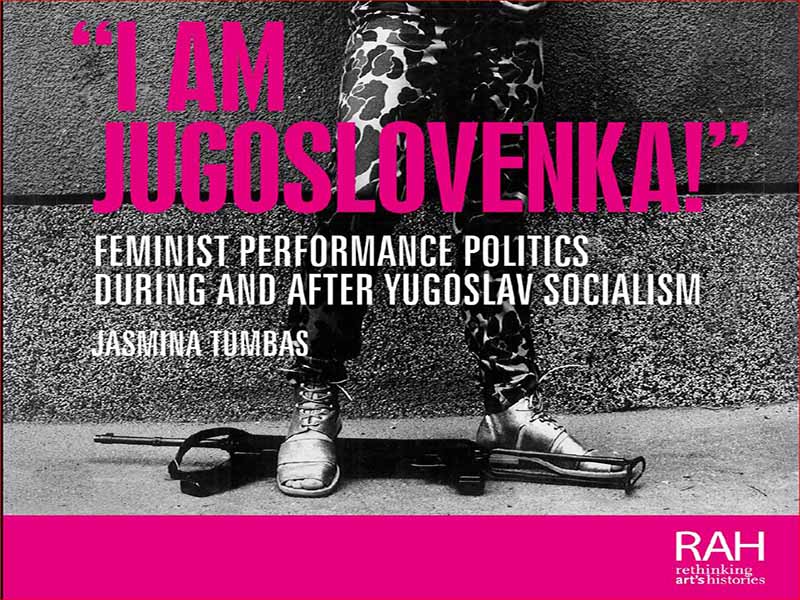










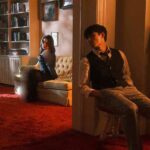
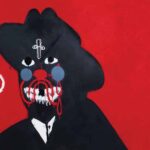




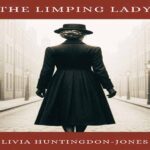
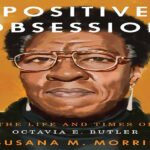




نظرات کاربران